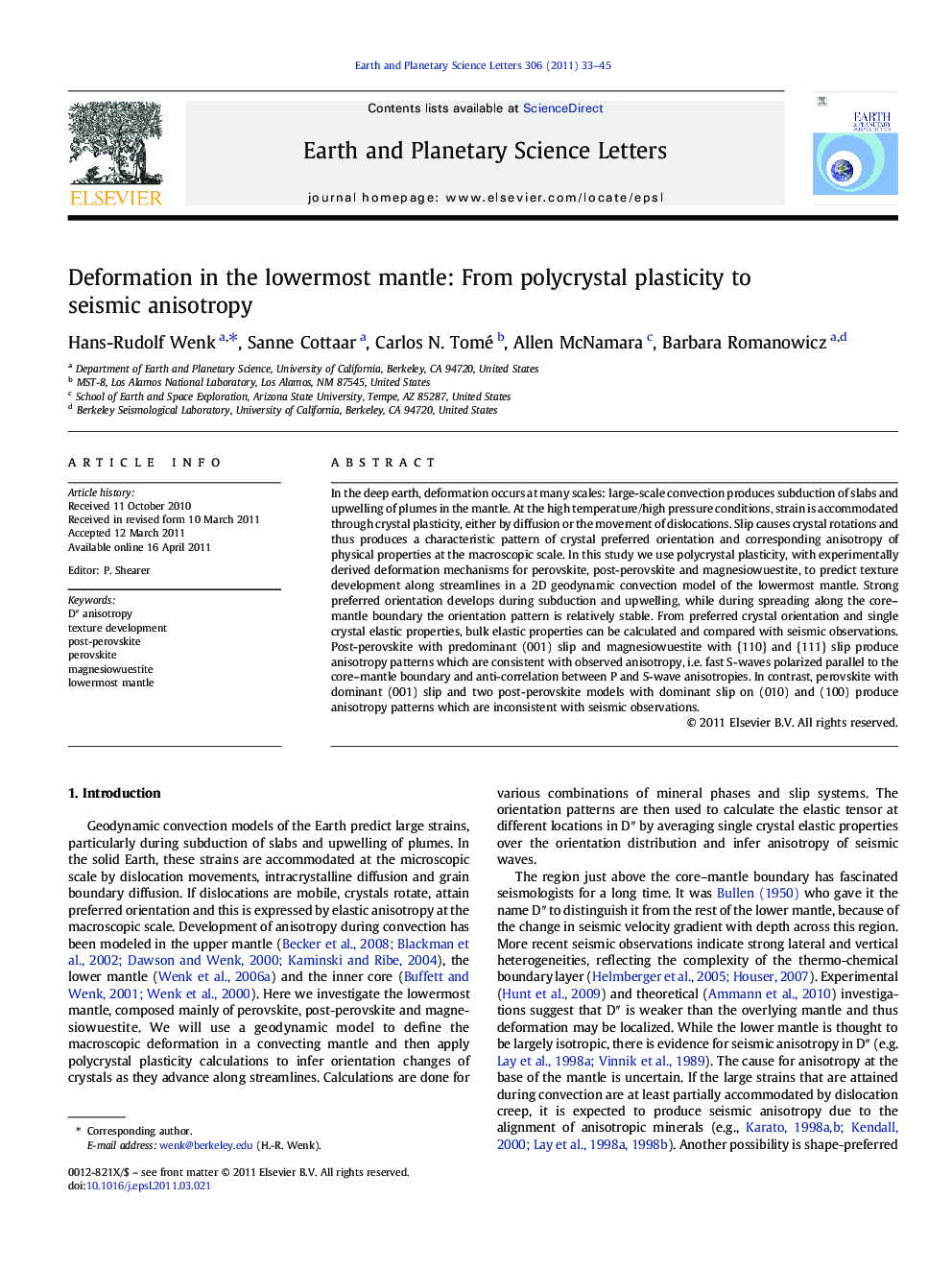| کد مقاله | کد نشریه | سال انتشار | مقاله انگلیسی | نسخه تمام متن |
|---|---|---|---|---|
| 4678061 | 1634828 | 2011 | 13 صفحه PDF | دانلود رایگان |

In the deep earth, deformation occurs at many scales: large-scale convection produces subduction of slabs and upwelling of plumes in the mantle. At the high temperature/high pressure conditions, strain is accommodated through crystal plasticity, either by diffusion or the movement of dislocations. Slip causes crystal rotations and thus produces a characteristic pattern of crystal preferred orientation and corresponding anisotropy of physical properties at the macroscopic scale. In this study we use polycrystal plasticity, with experimentally derived deformation mechanisms for perovskite, post-perovskite and magnesiowuestite, to predict texture development along streamlines in a 2D geodynamic convection model of the lowermost mantle. Strong preferred orientation develops during subduction and upwelling, while during spreading along the core–mantle boundary the orientation pattern is relatively stable. From preferred crystal orientation and single crystal elastic properties, bulk elastic properties can be calculated and compared with seismic observations. Post-perovskite with predominant (001) slip and magnesiowuestite with {110} and {111} slip produce anisotropy patterns which are consistent with observed anisotropy, i.e. fast S-waves polarized parallel to the core–mantle boundary and anti-correlation between P and S-wave anisotropies. In contrast, perovskite with dominant (001) slip and two post-perovskite models with dominant slip on (010) and (100) produce anisotropy patterns which are inconsistent with seismic observations.
Research highlights
► Origin of seismic anisotropy in the lowermost mantle (D″ zone).
► Geodynamic model to quantify strain evolution.
► Polycrystal plasticity to explore crystal preferred orientation.
► Postperovskite, deforming by (001) slip can explain seismic signature.
Journal: Earth and Planetary Science Letters - Volume 306, Issues 1–2, 1 June 2011, Pages 33–45